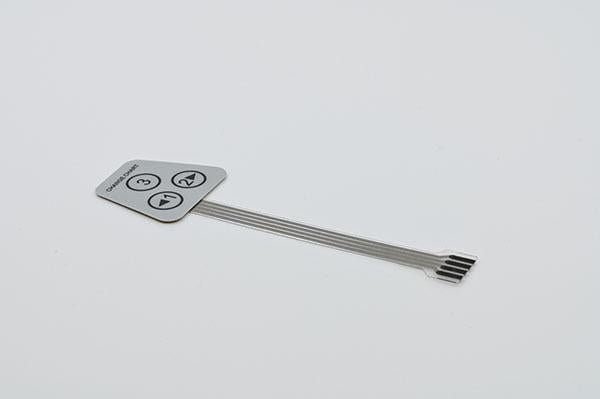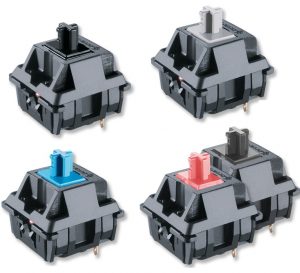The Complete Guide to Membrane Switch Technology and Its Applications
The Complete Guide to Membrane Switch Technology and Its Applications
Blog Article
Understanding the Capability of Membrane Switches Over for Individual Interface Instruments
The performance of membrane layer switches over stands for a considerable advancement in customer interface style, combining effectiveness with aesthetic flexibility. These buttons operate through a multi-layered framework that equates individual communications right into electric signals, allowing for both small layouts and strength against environmental variables. As sectors increasingly prioritize individual experience, recognizing the nuances of membrane button technology becomes essential. What effects do these advancements hold for future applications, and just how might they redefine user interactions throughout various gadgets?
What Are Membrane Buttons?
Membrane layer switches are cutting-edge interface devices that help with individual communication with digital tools. These flexible elements contain several layers, including a graphic overlay, spacer, and a printed circuit layer. The design permits for a smooth combination into different electronic devices, boosting both the aesthetic and practical aspects of interface.
Membrane layer buttons are frequently utilized in a large range of applications, from household appliances to industrial equipment and clinical gadgets. Their building usually includes a thin profile, making them an optimal choice for compact designs. The responsive feedback given by these buttons can be engineered to meet specific user choices, making sure effective interaction between the customer and the gadget.
Sturdiness is one more significant benefit of membrane buttons, as they are resistant to dust, wetness, and chemicals, which improves their life expectancy sought after settings. Furthermore, these switches can be tailored in terms of form, dimension, and visuals style, permitting for branding and user-specific functions. In general, membrane layer changes represent a sensible option for enhancing customer experience in electronic gadgets, integrating functionality with visual appeal in an effective manner.
Exactly How Membrane Changes Work
Operating on a simple concept, membrane switches over utilize a split construction to sign up user input properly. Each switch is composed of multiple layers, including a published circuit layer, a spacer layer, and a leading graphic layer, which are designed to work with each other seamlessly. When a customer presses the leading layer, it compresses the spacer layer, bringing the conductive aspects of the circuit layer into contact with each various other.
This contact produces a shut circuit, signaling the gadget to execute a particular feature. The layout allows for different arrangements, including responsive comments, which can improve the customer experience by providing a physical feeling upon activation. The products made use of in membrane layer buttons typically consist of adaptable substratums, such as polyester or polycarbonate, which ensure toughness and resilience against damage.

Trick Advantages of Membrane Buttons

Another significant advantage is their density. Membrane buttons are slim and lightweight, which enables suppliers to save space in their tools without compromising functionality. This attribute is particularly beneficial in applications where weight and quantity are crucial factors to consider.
Furthermore, membrane layer buttons are immune to dirt, wetness, and chemicals, enhancing their sturdiness. This strength extends their life-span and reduces the requirement for regular replacements, resulting in cost financial savings over time.
Additionally, the responsive feedback provided by membrane layer switches can be enhanced to boost user communication. They can include functions such as raised switches or distinct clicks, improving functionality and customer experience.
Applications Across Industries
Individual user interface devices utilizing membrane layer buttons are prevalent in a broad selection of industries, showcasing their versatility and capability. Membrane Switch. In the clinical field, membrane switches are important to tools such as analysis equipment and client tracking systems, where their toughness and ease of cleaning are vital for keeping health standards. Similarly, in the automobile market, these buttons are used in control panel controls and infomercial systems, providing a sleek and modern interface for users.
In addition, the customer electronic devices field gain from membrane layer buttons in home appliances and portable tools, where portable layout and easy to use user interfaces improve individual experience. Industrial applications additionally leverage membrane changes for control board in equipment and automation systems, emphasizing their effectiveness and resistance to rough settings.
In the aerospace and protection sectors, membrane layer buttons are utilized in cockpit controls and equipment, where reliability and efficiency under severe conditions are critical. In addition, the gaming industry significantly incorporates membrane buttons in controllers and game devices, contributing to an engaging individual experience. On the whole, the flexibility of membrane switches over allows their prevalent usage across various industries, underscoring their importance in contemporary user interface layout.
Future Patterns in Membrane Switch Modern Technology

Furthermore, making use of innovative materials, such as polycarbonate and polyester films, is expected to increase, providing improved resilience and resistance to environmental stress factors. These products contribute to the general durability of membrane layer buttons, making them appropriate for harsher commercial applications.
Moreover, the unification of smart modern technology, including IoT connectivity, will certainly make it possible for membrane layer switches to interact with other gadgets and systems, facilitating a more interactive individual experience. This pattern lines up with the growing demand for smart devices across various industries, from health care to consumer electronics.
Lastly, customization choices are expected to broaden, enabling makers to produce bespoke More Bonuses options tailored to particular user needs and preferences. These developments will place membrane layer buttons as necessary parts in the development of individual interface innovation.
Final Thought
To conclude, membrane switches stand for a crucial advancement in customer interface modern technology, using a dependable and versatile solution for varied electronic applications. Their layered building and construction assists in compact layout, while functions such as tactile responses improve user communication. The toughness against ecological elements even more strengthens their energy across numerous markets. As advancements in product science and touch picking up modern technologies continue, the capability and applicability of membrane buttons are expected to broaden, reinforcing their relevance in modern digital devices.
Report this page